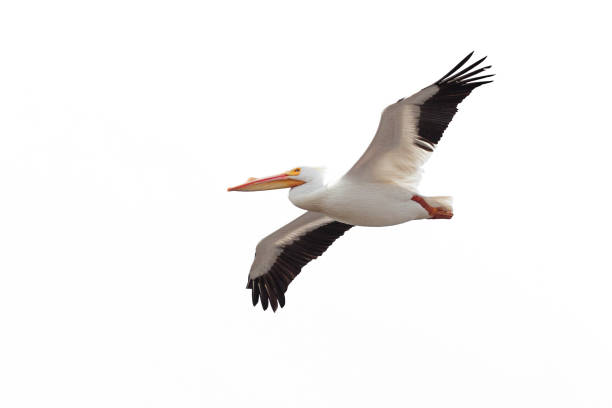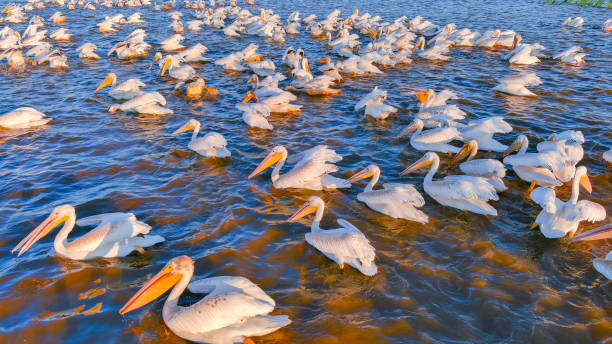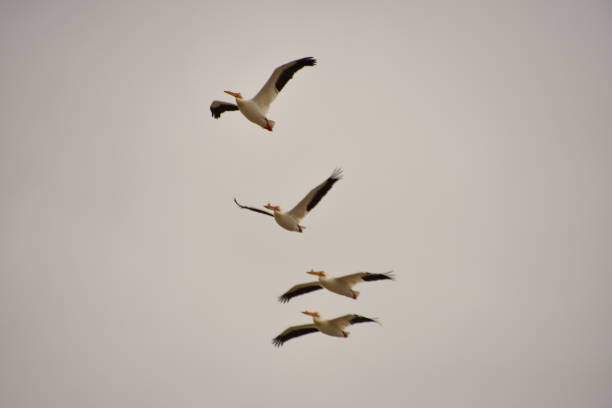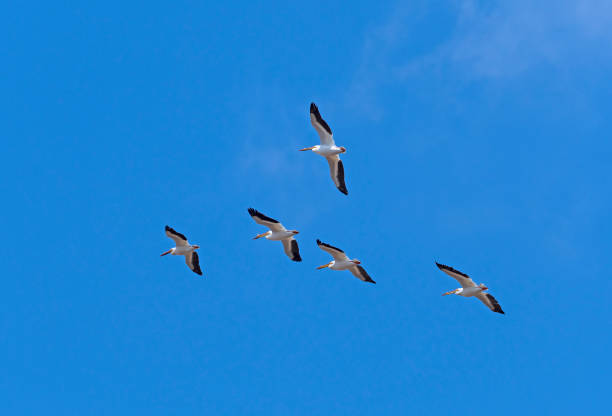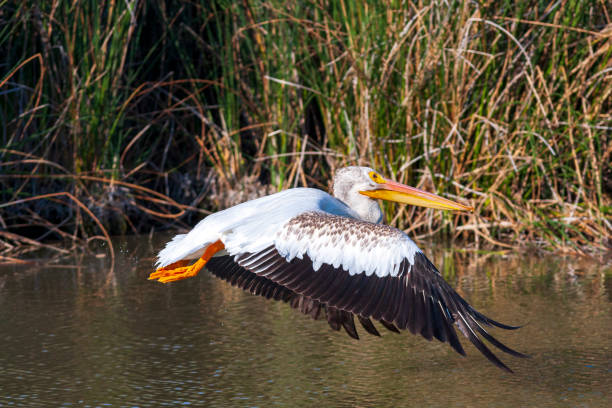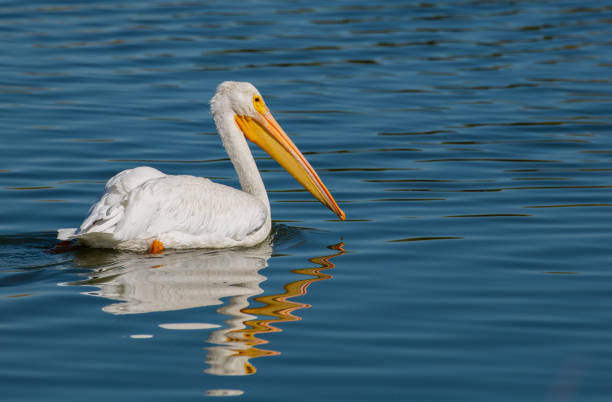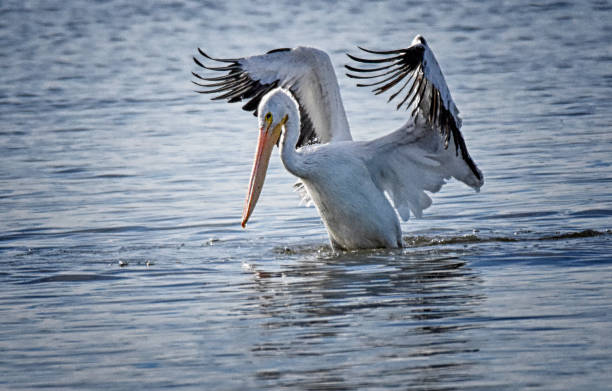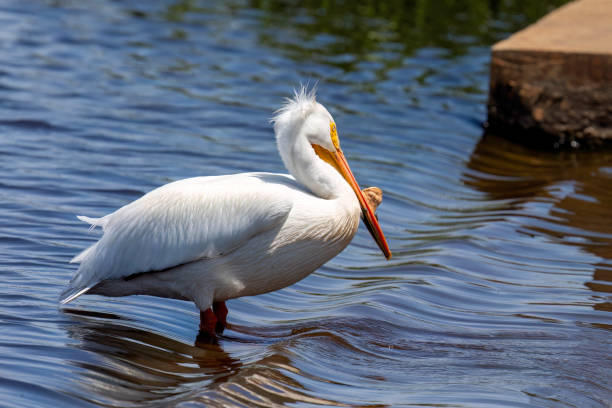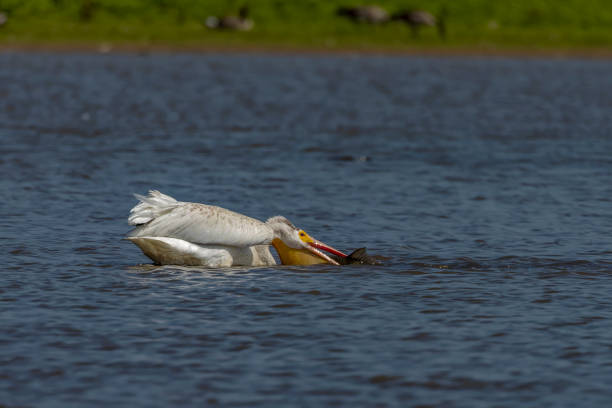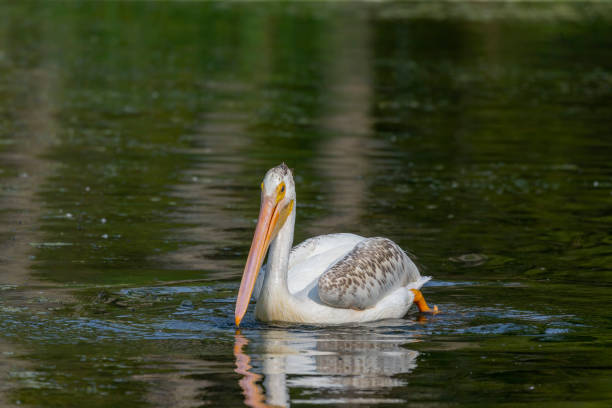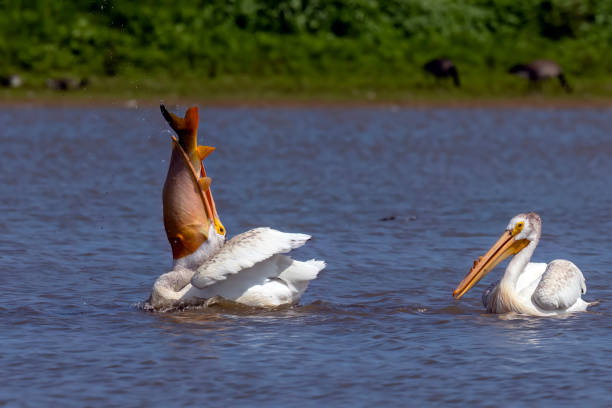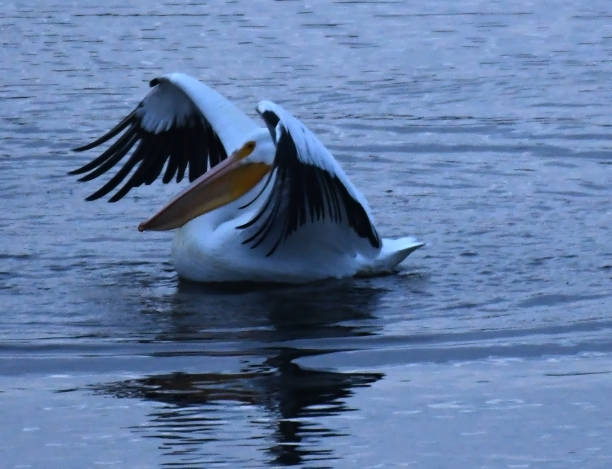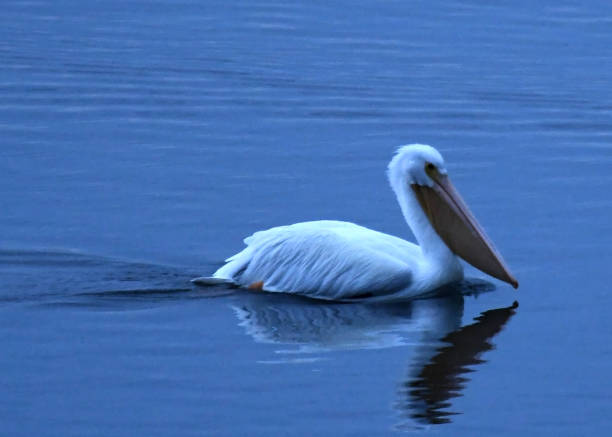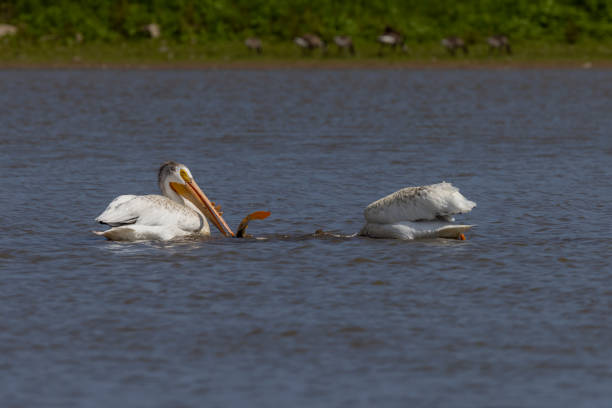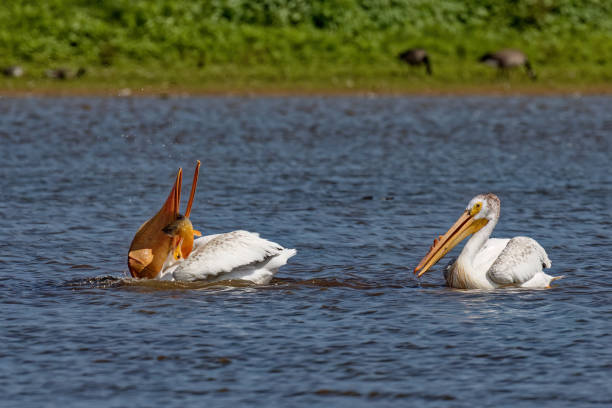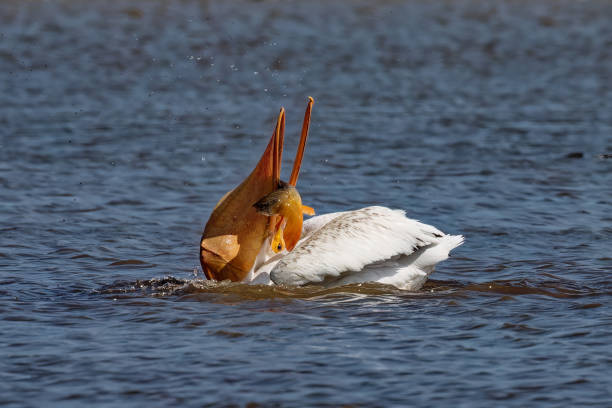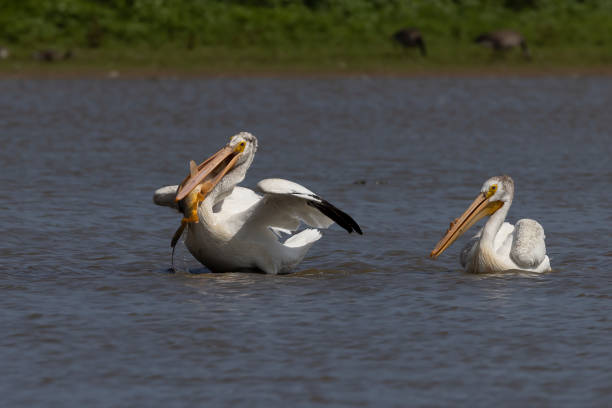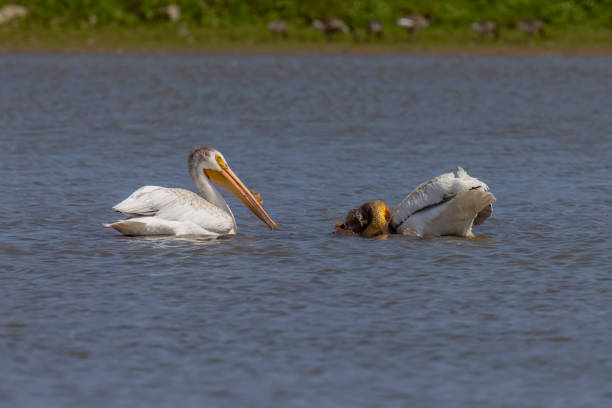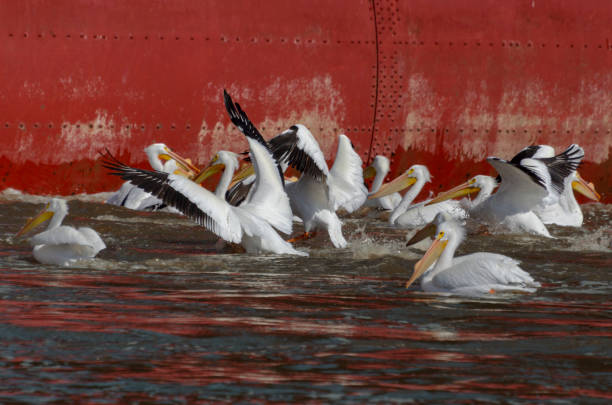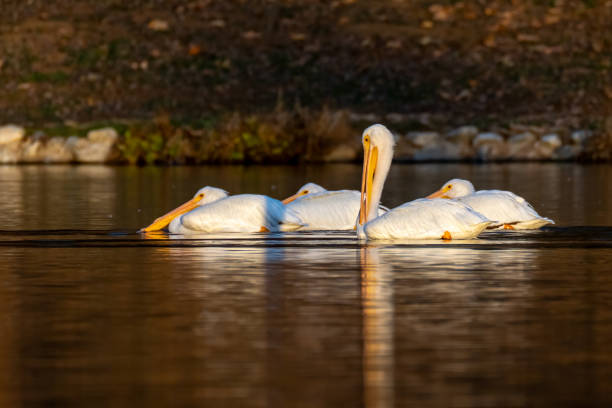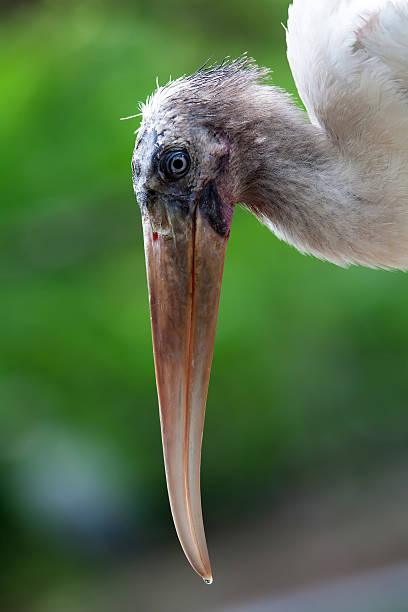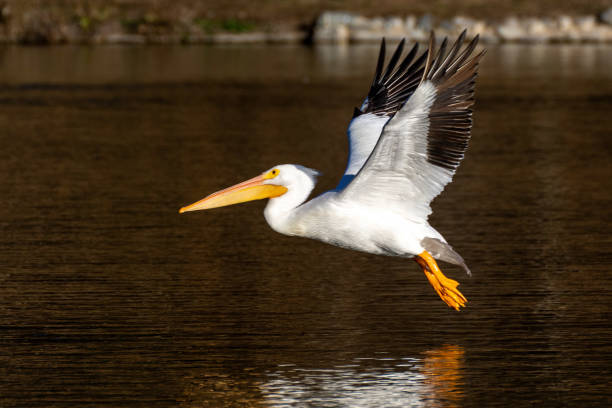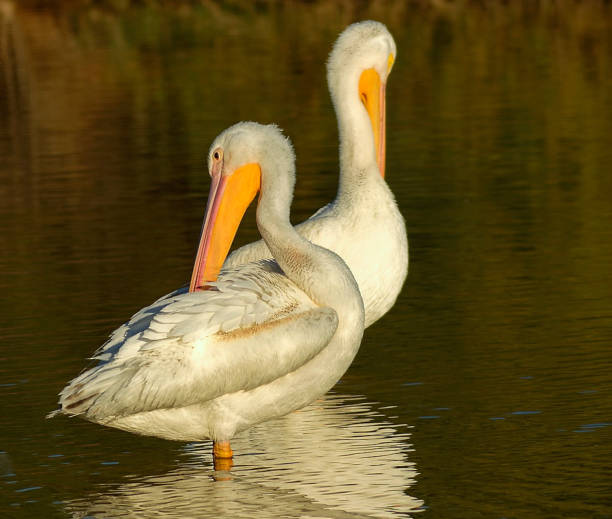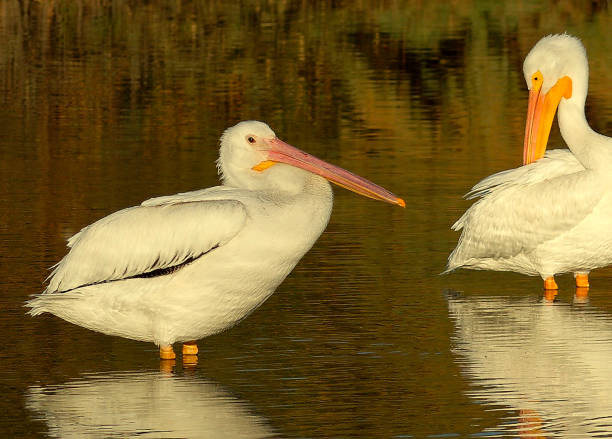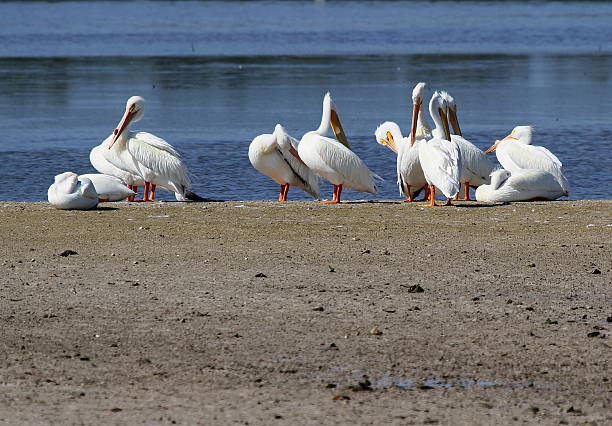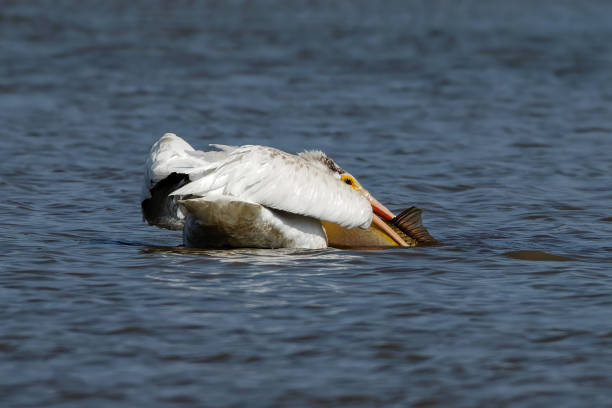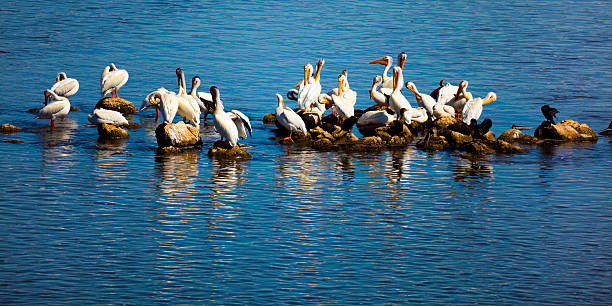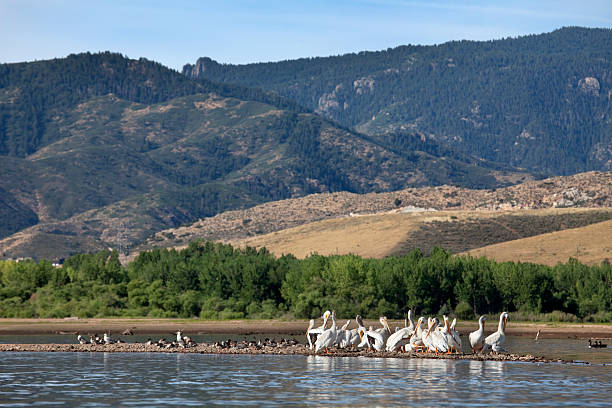
White Pelican Animal Behavior North America Usa Pictures, Images and Stock Photos
Browse 510+ white pelican animal behavior north america usa stock photos and images available, or start a new search to explore more stock photos and images.

With Turks Head Peak and the Rocky Mountains in the distance, a flock of wild common merganser and a flock of wild White American pelicans preen on a sand bar where the South Platte River enters Chatfield Reservoir, Colorado. Drought conditions have lowered the waters substantially in the reservoir.
Wings spread wide open, an American white pelican drifts across a white background
Huge squadron of beautiful American white pelicans swimming and fishing together on the Great Lakes at sunrise.
One sign of climate change noticed in Wisconsin in recent years, is that American white pelicans now migrate this far north. There were no pelicans here at all, 30 years ago.
Taken At Stillwater National Wildlife Refuge
A Group of White Pelican Flying Overhead in Horicon National Wildlife Refuge in Wisconsin
Bald Eagle winter migration through the mid west USA
American White Pelican taking off in flight over marshy water with tall reed grasses.
American White Pelican in a V formation, actually they can't hold the formation for more than about a minute before they stagger all over the sky and then reform another V
American White Pelican
An American White Pelican Taking a Swim on a Summer Morning
White Pelican bird flapping wings as it catches fish in blue water and bright sunlight.
White pelican
American White Pelican flying by.
american white pelicans feeding in the morning at yellowstone national park, usa
american white pelicans paddling on the yellowstone river in yellowstone national park, usa
American White Pelicans grooming at Shadow Mountain Lake in Grand Lake, Colorado
One white pelican swimming in rippled lake water
The American white pelican (Pelecanus erythrorhynchos) on the lake
American White Pelican - flock of birds preening
Natural scene from Wisconsin
The American white pelican (Pelecanus erythrorhynchos) on the hunt
The American white pelican (Pelecanus erythrorhynchos) on the hunt
Natural scene from Wisconsin
The American white pelican (Pelecanus erythrorhynchos) on the hunt
The American white pelican (Pelecanus erythrorhynchos) on the hunt
A pelican dries its wings while floating on the water.
A pelican floats on water in the middle of winter.
A pelican spreads its wings as it searches for prey.
Two pelicans float on the water.
The American white pelican (Pelecanus erythrorhynchos) on the hunt
The American white pelican (Pelecanus erythrorhynchos) on the hunt
The American white pelican (Pelecanus erythrorhynchos) on the hunt
The American white pelican (Pelecanus erythrorhynchos) on the hunt
The American white pelican (Pelecanus erythrorhynchos) on the hunt
The American white pelican (Pelecanus erythrorhynchos) on the hunt
American white pelicans feeding on the Mississippi river near Davenport Iowa while migrating up the mighty river during the crisp cool air of early spring
American white pelicans feeding on the Mississippi river near Davenport Iowa while migrating up the mighty river during the crisp cool air of early spring
A group of white pelicans (Pelecanus erythrorhynchos) on a lake at Yucaipa Regional Park in southern California.
American white pelicans feeding on the Mississippi river near Davenport Iowa while migrating up the mighty river during the crisp cool air of early spring
American white pelicans feeding on the Mississippi river near Davenport Iowa while migrating up the mighty river during the crisp cool air of early spring
closeup of a white pelican with a droplet of water at the tip of a very long beak.
A white pelican (Pelecanus erythrorhynchos) taking off from a lake at Yucaipa Regional Park in southern California.
Pelicans bathing and preening at sunset
Pelicans bathing and preening at sunset
Pelicans bathing and preening at sunset
A white pelican (Pelecanus erythrorhynchos) gliding over the water just before landing on a lake at Yucaipa Regional Park in southern California.
Photographed these cute Pelicans on Sanibel Island, Florida.
The American white pelican (Pelecanus erythrorhynchos) on the hunt
American White Pelicans feeding on the marsh.
This flying Brown Pelican image was taken in the san Francisco bay, California, United States
An American White Pelican, Pelecanus erythrorhynchos, perched on a rock in the middle of a lake in Willcox, Arizona. Not much else, he just looks so proud.
There are at least fifty types of shorebird species in North America and are found throughout North America and most of them can be seen along the water's edge of our lands. Some prefer salt water and some fresh water, depending on the season. The American white Pelican is one of the largest birds in North American with a 9-foot wingspan. The plumage is almost entirely bright white, except the black primary and secondary quills, which are hardly visible except in flight. The bill is huge and flat on the top, with a large throat sac below. In the breeding season, its bill is vivid orange in color and a laterally flattened "horn" on the upper bill. The horn is shed after the birds have mated and laid their eggs. Immature birds have light grey plumage with darker brownish nape and quills. The American White Pelican is similar to Brown Pelican in shape but much larger and very different in habits. It lives far inland, feeds cooperatively in shallow lakes and does not dive from the air for fish. On the water it dips its pouched bill to scoop up fish, or tip-up like an oversized dabbling duck. It uses its pouch to scoop up food but swallow its catch before flying off. Other animals eaten by these birds are crayfish and amphibians. Sometimes, a group of pelicans would work together to herd fish into the shallows for easy feeding. Pelicans are skillful food thieves. They steal from other pelicans trying to swallow large fish and are successful about one-third of the time.
There are at least fifty types of shorebird species in North America and are found throughout North America and most of them can be seen along the water's edge of our lands. Some prefer salt water and some fresh water, depending on the season. The American white Pelican is one of the largest birds in North American with a 9-foot wingspan. The plumage is almost entirely bright white, except the black primary and secondary quills, which are hardly visible except in flight. The bill is huge and flat on the top, with a large throat sac below. In the breeding season, its bill is vivid orange in color and a laterally flattened "horn" on the upper bill. The horn is shed after the birds have mated and laid their eggs. Immature birds have light grey plumage with darker brownish nape and quills. The American White Pelican is similar to Brown Pelican in shape but much larger and very different in habits. It lives far inland, feeds cooperatively in shallow lakes and does not dive from the air for fish. On the water it dips its pouched bill to scoop up fish, or tip-up like an oversized dabbling duck. It uses its pouch to scoop up food but swallow its catch before flying off. Other animals eaten by these birds are crayfish and amphibians. Sometimes, a group of pelicans would work together to herd fish into the shallows for easy feeding. Pelicans are skillful food thieves. They steal from other pelicans trying to swallow large fish and are successful about one-third of the time.
There are at least fifty types of shorebird species in North America and are found throughout North America and most of them can be seen along the water's edge of our lands. Some prefer salt water and some fresh water, depending on the season. The American white Pelican is one of the largest birds in North American with a 9-foot wingspan. The plumage is almost entirely bright white, except the black primary and secondary quills, which are hardly visible except in flight. The bill is huge and flat on the top, with a large throat sac below. In the breeding season, its bill is vivid orange in color and a laterally flattened "horn" on the upper bill. The horn is shed after the birds have mated and laid their eggs. Immature birds have light grey plumage with darker brownish nape and quills. The American White Pelican is similar to Brown Pelican in shape but much larger and very different in habits. It lives far inland, feeds cooperatively in shallow lakes and does not dive from the air for fish. On the water it dips its pouched bill to scoop up fish, or tip-up like an oversized dabbling duck. It uses its pouch to scoop up food but swallow its catch before flying off. Other animals eaten by these birds are crayfish and amphibians. Sometimes, a group of pelicans would work together to herd fish into the shallows for easy feeding. Pelicans are skillful food thieves. They steal from other pelicans trying to swallow large fish and are successful about one-third of the time.
Pelicans and Dowitchers on their migration through the gulf coast of Texas
The American white pelican (Pelecanus erythrorhynchos) on the hunt
"American White Pelicans Sunning and Grooming Themselves on Rocky Islands. This image is well composed for stock photography with ample background for copy space. The pelican is the new mascot for ecology, and it will be for a long time to come. Please look at the small details of this image, these birds are very beautiful in the morning light! These lucky pelicans are clean and carefree."
American White Pelican - flock of birds standing in a lake
